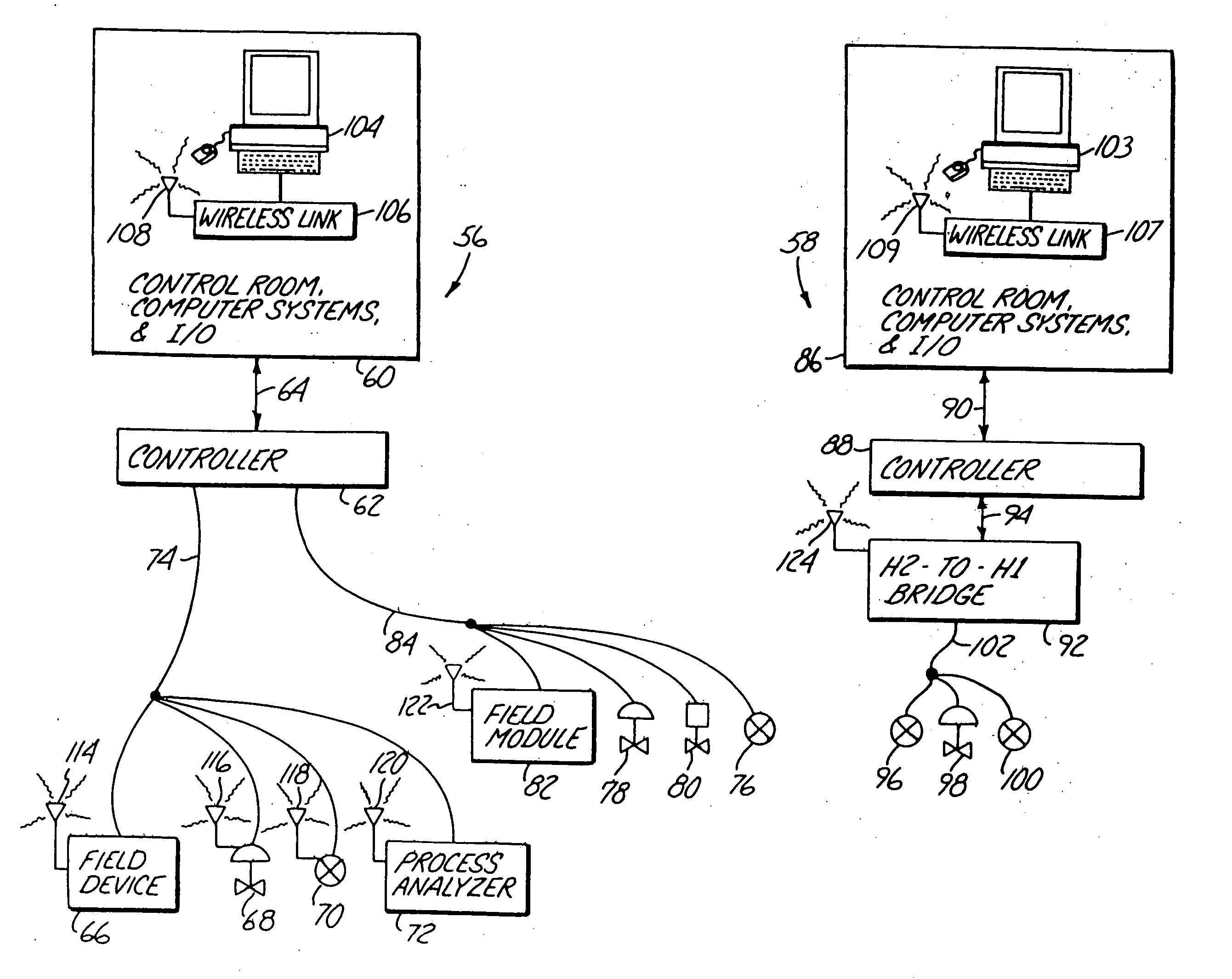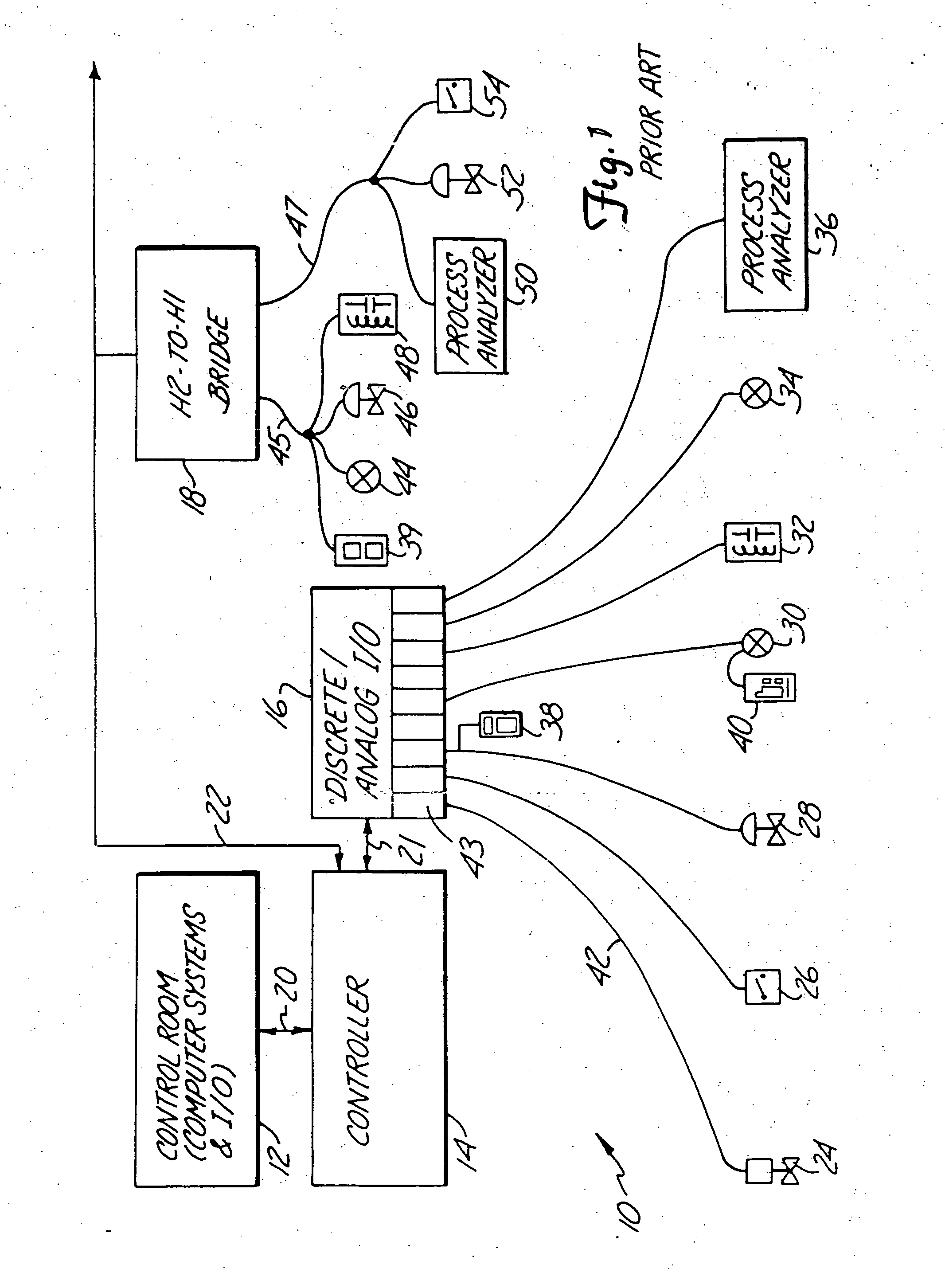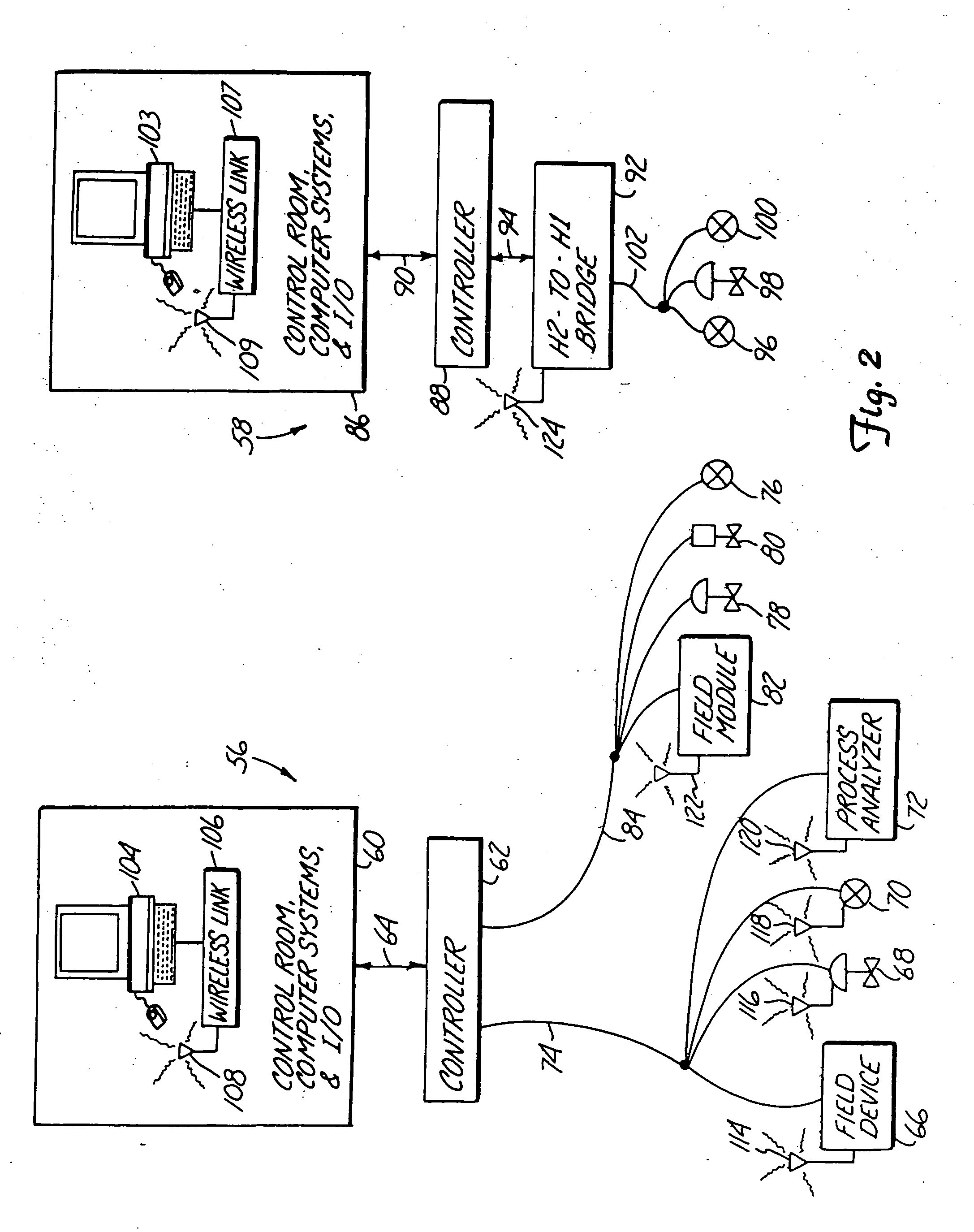Wireless communications within a process control system using a bus protocol
- Summary
- Abstract
- Description
- Claims
- Application Information
AI Technical Summary
Benefits of technology
Problems solved by technology
Method used
Image
Examples
first embodiment
[0036] Two embodiments of the present invention are illustrated in DCS 56. The first embodiment is illustrated by those field devices coupled to H1 Fieldbus control network 74. Each field device on control network 74 includes a wireless transceiver. Field device 66 represents any-generic field device coupled to control network 74 and includes wireless transceiver 114. Valve positioner 68 includes wireless transceiver 116, transmitter 70 includes wireless transceiver 118, and process analyzer 72 includes wireless transceiver 120. Each wireless transceiver implements a redundant wireless Fieldbus connection with terminal 104, thereby allowing redundant wireless access to each field device from control room 60.
[0037] Another novel feature of the present invention is that the wireless Fieldbus port attached to each field device is powered by the hardwired H1 Fieldbus port attached to each device. Since the wireless Fieldbus link of the field devices is powered by the existing H1 Fieldbu...
second embodiment
[0039] the present invention is illustrated by the devices connected to H1 Fieldbus control network 84. Transmitter 76, valve positioner 78, and solenoid 80 are each coupled to control network 84. Also coupled to control network 84 is field module 82, which includes a wireless transceiver 122 powered by H1 Fieldbus control network 84. Field module 82, in essence, forms a wireless bridge between control network 84 and terminal 104 in control room 56, and allows terminal 104 to access each device coupled to H1 Fieldbus control network 84. Accordingly, field module 82 is ideally suited for providing redundant wireless access in an existing environment having a variety of H1 Fieldbus devices from different manufacturers.
third embodiment
[0040] the present invention is illustrated by DCS 58. In DCS 58, controller 88 is coupled to H2-to-H1 bridge by H2 Fieldbus distribution network 94. H2-to-H1 bridge links H2 Fieldbus distribution network 94 to H1 Fieldbus control network 102. H2-to-H1 bridge also includes a second Fieldbus port connected to wireless transceiver 124, and communicates with a remote device such as terminal 103. Accordingly, terminal 103 in control room 86 can access all field devices serviced by the H2-to-H1 bridge, such as transmitters 96 and 100 and valve positioner 98. In other configurations, it is common for an H2-to-H1 bridge to service a plurality of H1 Fieldbus control networks, in which case all field devices connected to all control networks serviced by the H2-to-H1 bridge can be accessed remotely.
[0041] The present invention provides wireless redundant access to field devices in a distributed control system having a control room that provides hardwired access to the field devices. In a mode...
PUM
 Login to View More
Login to View More Abstract
Description
Claims
Application Information
 Login to View More
Login to View More - R&D
- Intellectual Property
- Life Sciences
- Materials
- Tech Scout
- Unparalleled Data Quality
- Higher Quality Content
- 60% Fewer Hallucinations
Browse by: Latest US Patents, China's latest patents, Technical Efficacy Thesaurus, Application Domain, Technology Topic, Popular Technical Reports.
© 2025 PatSnap. All rights reserved.Legal|Privacy policy|Modern Slavery Act Transparency Statement|Sitemap|About US| Contact US: help@patsnap.com



